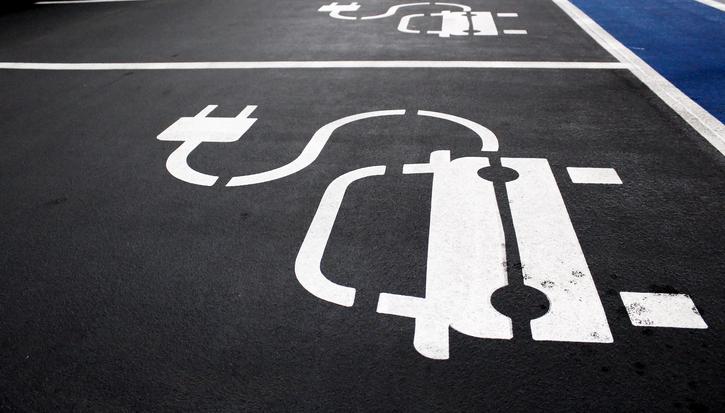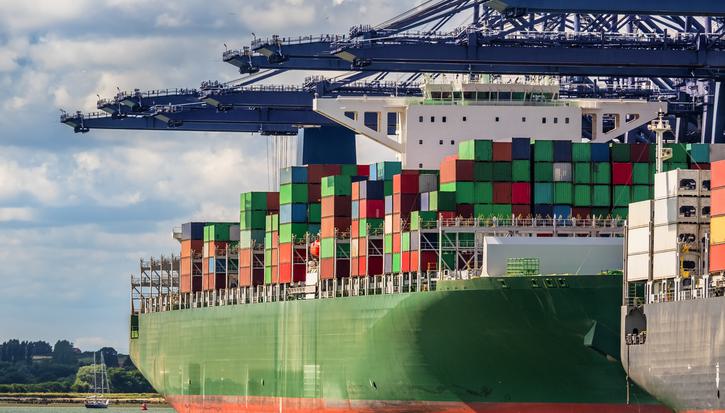After genocide: Democracy in Rwanda, 20 years on
Article
In the coming months, commemorations will be held across the globe to mark the 20th anniversary of the Rwandan genocide, which between April and July 1994 claimed the lives of around 800,000 Tutsi and their perceived Hutu and Twa sympathisers. Foreign leaders and journalists who descend on Rwanda this year will find a country that, under the leadership of President Paul Kagame, has recorded enormous gains since the genocide in terms of rebuilding infrastructure, socioeconomic development, gender equality, accountability for genocide perpetrators, and the integration of former combatants. However, they will also find a country that faces critical decisions about appropriate forms of governance and human rights, how to provide for a rapidly growing population, and the role it should play in the volatile Great Lakes region.
A core tension has defined Rwanda's political trajectory since 1994. A highly motivated, disciplined ruling party, the Rwandan Patriotic Front (RPF), which is the main reason that Rwanda has rebuilt so effectively, now poses its greatest challenges, namely the need for a wider spectrum of political opinion and more space for opposition political parties to organise and campaign. Understanding Rwanda's post-genocide development requires a recognition of the double-edged sword that is the RPF. The tendency of many commentators has been either to praise Rwanda unreservedly as a post-conflict success story or to damn it as a dictatorship that is likely to explode again into mass violence. These polarised depictions overlook critical positives and negatives in the Rwandan landscape – both of which tend to flow from the same political source.
The complex legacies of the genocide, as well as the history, ideology and internal structures of the RPF, as a former rebel movement turned ruling party, are crucial in interpreting Rwanda's situation since 1994 and its likely future directions. The fervour and discipline of the RPF in reconstructing the nation after the genocide stem from important elements of the party's backstory: its formation in exile and the long refugee experiences of its founding members, many of whose parents fled waves of anti-Tutsi violence in the early 1960s; the direct experiences of many RPF leaders (including Kagame) of conflict, as part of Yoweri Museveni's National Resistance Army (NRA) in Uganda in the 1980s; the RPF's military campaign against the Hutu-dominated government of Juv?(C)nal Habyarimana in Rwanda between 1990 and 1994, which the RPF framed as the rightful return of Tutsi refugees to their homeland; and the genocide in 1994 and the RPF's coming to power at the same time as its fighters found their home villages destroyed and families murdered. These experiences instilled a deep sense of purpose and resolve, a collective identity forged through conflict, and an ethos of self-reliance that remains one of the RPF's defining features.
The evolution of the RPF as a ruling party echoes the experiences of other rebel forces or liberation movements that assumed power after armed struggle, such as the National Resistance Movement (NRM) in Uganda, the African National Congress (ANC) in South Africa and the Sudan People's Liberation Movement (SPLM), now the ruling party in South Sudan. The genocide, however, exerted specific pressures that are largely unknown to the RPF's post-liberation cousins. After defeating the genocidal forces in July 1994, the RPF inherited a devastated country: three-quarters of the Tutsi minority had been killed, the remaining population suffered extreme trauma, the national infrastructure had been destroyed, economic productivity had ceased, and most of the personnel required to run the state had been murdered or had fled the country. The RPF also faced a major security threat from tens of thousands of genocide perpetrators who remained in Rwanda or had escaped across the border into Zaire (now the Democratic Republic of Congo, or DRC) and other neighbouring states.
This extreme political, social and military situation inevitably dominated the Rwandan policy domain for years afterwards. In response, the government prosecuted around 400,000 genocide suspects, regardless of their political or social standing, through a system of 11,000 community-based courts known as gacaca – the most extensive post-conflict justice process attempted anywhere in the world. But the involvement of former g?(C)nocidaires in new rebel groups in eastern DRC generated a persistent sense of vulnerability within Rwanda – a vulnerability often manipulated by the Rwandan government to justify its military presence in the DRC but nevertheless genuinely felt by many Rwandans, especially those living in the country's western border regions.
The RPF's high degree of hierarchical discipline – coupled with vital external assistance from an international community seeking redemption after its failure to intervene to halt the genocide – suited perfectly the task of rebuilding the nation after 1994. Internal party cohesion and low levels of corruption (factors lacking in most other African rebel movements) meant the RPF could focus on rebuilding national infrastructure, political and judicial institutions and the means of service delivery. The negative example of neighbouring Uganda, where Museveni's increasingly corrupt NRM failed to deliver on its promises of national socioeconomic emancipation, directly informed the RPF's strategy. A key lesson for the RPF from the Ugandan experience was that failing to provide tangible development in rural areas had generated widespread political discontent and spawned rebel movements such as the West Nile Bank Front, the Holy Spirit Movement and the Lord's Resistance Army.
In contrast to most of its neighbours, Rwanda has recorded substantial economic growth in the last two decades, while delivering improved education, healthcare, transport networks and agricultural assistance across ethnic lines. All current indications are that these impressive socioeconomic gains will continue, although Rwanda (already one of the most densely populated countries in the world) faces a significant challenge in the form of population growth that is estimated to run at 25 per cent over the next 10 years. Through the gacaca courts, the country has also laid important foundations for long-term reconciliation by directly confronting the causes of – and ordinary citizens' complicity in – the genocide. The gacaca process has been vital in addressing a lingering atmosphere of community suspicion and the need for greater clarity about who did and did not commit genocide crimes. Meanwhile, tens of thousands of mainly Hutu combatants from Congolese rebel groups have been reintegrated into Rwandan communities through an extensive demobilisation scheme. In short, the scale and speed of Rwanda's reconstruction would have been unimaginable in 1994.
However, the core strengths of the RPF in responding to the genocide – discipline and single-mindedness – pose substantial challenges in other vital policy areas. In particular, the RPF's desire for internal cohesion has made it suspicious of critical voices within and outside of the party – a feature compounded by Rwanda's fraught experience of multiparty democracy in the early 1990s, which saw the rise of ethnically driven extremist parties and helped to create an environment conducive to genocide. The RPF's singular focus on rebuilding the nation and facilitating the return of refugees means it has often viewed dissent as an unaffordable distraction. Rwanda's disastrous dalliance with multipartyism before the genocide has only added to the deep suspicion of policymaking based on the open contestation of ideas.
Another crucial feature that the RPF shares with other former rebel movements is the pressure to absorb opposing factions into a cohesive whole. As liberation movements become governments, they inevitably require the finance and expertise of members and allies who did not fight on the frontlines but often supported the movements while in exile. A challenge for political parties like the RPF is to deploy the legitimising discourse of armed struggle while integrating important actors who may have lived in relative comfort overseas as the fighting raged. Members of this latter category possess resources that are vital to the reconstruction of a nation after conflict but may, because of their very different histories, hold divergent views on the necessary political directions.
Within the RPF, important factions have developed since 1994 between hardline and more moderate voices, with returnees from the Tutsi diaspora heavily represented in the latter group. In the last five years, the RPF has recruited large numbers of highly educated young Tutsi from the diaspora in North America, Europe and the Great Lakes region who have no direct experience of the genocide but whose energy, skills and international networks are essential to the RPF's rebuilding programme. Over the last decade, many key Rwandan government debates – for example, over justice processes for genocide crimes, repeal of the death penalty, laws against 'genocide ideology' and ethnic 'divisionism', freedom of the press, the switch of the national language from French to English, and the presidential succession plan, given that Kagame is constitutionally required to step down when his second term expires in 2017 – have centred around these factions. While many commentators have focused on the influence of donors and other external parties on Rwandan policymaking, insufficient attention has been paid to these vital internal dynamics and the importance of maintaining cohesion within a divided RPF.
These two main challenges – concerning democratic space and internal party cohesion – stem from integral features of the RPF and will need to be addressed. For the moment, there are few signs of large-scale popular discontentment with the closed nature of Rwanda's political space. However, any substantial decline in socioeconomic conditions in the countryside will challenge this. The RPF's gamble appears to be that the population will tolerate a lack of national political contestation provided domestic stability and basic living standards are maintained. For now, the RPF seems to have rightly judged the popular mood, but that situation may not hold.
Meanwhile, the issue of internal cohesion has already come to a head, with a series of high-profile political and military defections from the party in recent years, including that of Patrick Karegeya, the former Rwandan head of intelligence, who was murdered in Johannesburg in January 2014. Today, the greater challenge to the RPF comes from within the party, not from everyday Rwandans. Some of the old guard, like Karegeya, have fallen out with Kagame and formed opposition parties in exile. Meanwhile, the recent sacking of RPF stalwarts and cabinet ministers Tharcisse Karugarama and Protais Musoni highlights critical divisions. Karugarama, for his part, was reportedly sacked after giving an interview to Chris McGreal from the Observer in which he insisted that Kagame should respect the constitution and step down before the 2017 election.
Rwanda has made remarkable strides since 1994. Many of these important gains could be undermined, however, if Rwanda does not embark on the difficult process of liberalising the national political terrain and providing greater space for dissent within and outside of the RPF, while guarding against the danger of ethnically extremist politics, as the country experienced in the early 1990s (and which today characterises much of the political mobilisation in the Rwandan diaspora). This is a difficult but necessary balancing act and would require the RPF to display a tolerance to political opposition that the ANC, NRM, SPLM and other post-liberation movements – not to mention its Rwandan predecessors – have largely failed to achieve. The 20th anniversary of the genocide therefore represents an opportunity to celebrate the extent of Rwanda's development but also a challenge to the RPF to consider the forms of governance necessary for continuing prosperity over the next 20 years and beyond.
Related items

Powering up public support for electric vehicles
Tackling greenhouse gas emissions will only work if public support for action remains strong. That means ensuring tangible improvements in people’s lives and heading off any brewing backlash.
Assessing the economy
Over the past few days and weeks, there has been lots of rather histrionic commentary about the UK’s economic situation as if the budget has created an economic disaster from which we’ll never recover.
Towards a UK trade strategy
The UK is facing a precarious and volatile period for global trade.